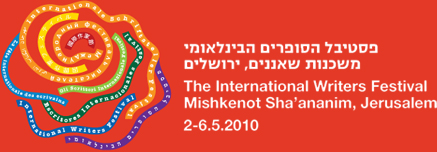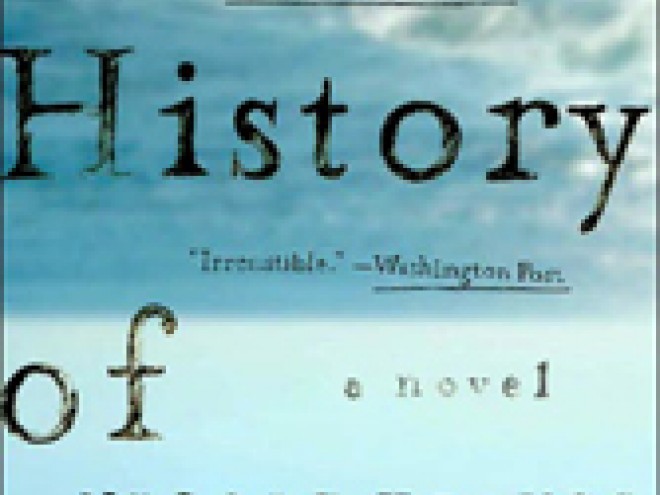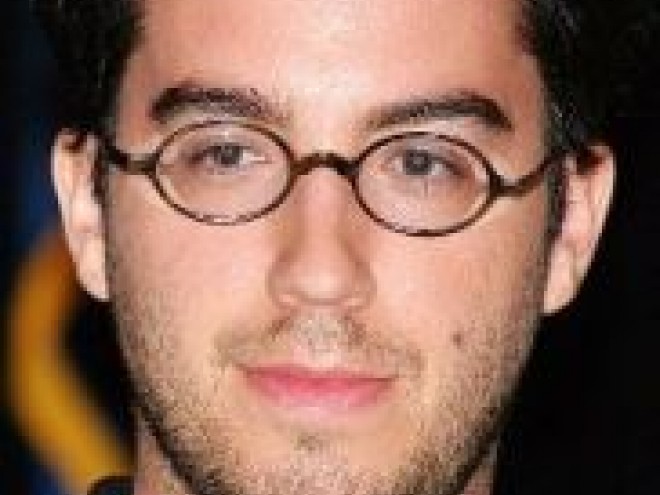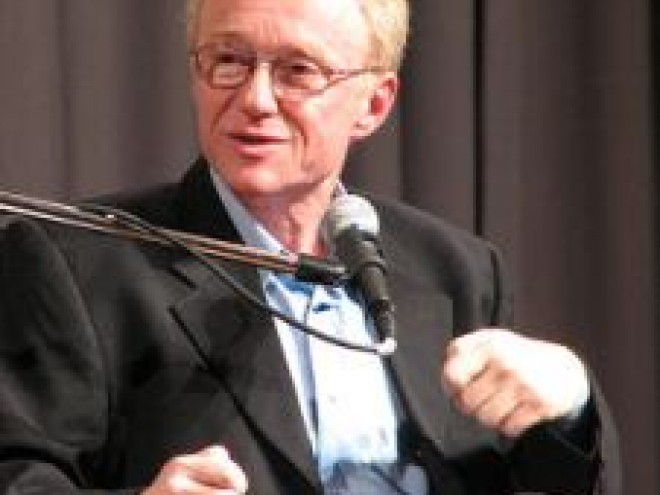
In his last post, Bob Goldfarb, a regular reviewer for Jewish Book World, wrote about the panel “Ashes and Ink: Contemporary Holocaust Writing.” He is blogging here all week about the International Writers’ Festival at Mishkenot Sha’ananim in Jerusalem.
An amiable chat between historian Simon Sebag Montefiore and novelist/essayist Amos Oz ended the first evening of the Mishkenot Sha’ananim Writers’ Conference. The pair would probably have been just as genial and entertaining no matter what they talked about, but their topics were the historian’s area of expertise and the novelist’s birthplace: Russia and Jerusalem.
“I love Jerusalem even when I don’t like it, even at times when I cannot stand it,” said Oz. “That is the situation right now. The Jerusalem of my childhood was filled with fanatics, and Jerusalem now is filled with fanatics. Then everyone was obsessed with the future; now everyone is obsessed with the past.”
On today’s Jerusalem he elaborated, “Everyone is obsessed with the idea of restoring some glorious past or other. It is in the nature of fanatics to view the future as a repetition of some glorious past – the past will come back, there will be a restoration of the glorious past, and then there will be an everlasting present, and no history, one everlasting plateau of happiness.” He mused that it might help normalize the city if the holy places could be sent to Scandinavia for 100 years.
Oz asked Montefiore, the author of two biographical volumes about Stalin, how he came to be interested in his subject. “Stalin is a fascinatingly complex figure, which is why people are still interested in him,” said the historian. “He helped created the world we know today. He was the true victor of World War II, the ‘good war.’ He ended up with an empire greater than that of the tsars. In Russia today he is no longer a Communist figure, he’s a tsar.”
How did Stalin do it? “There are two kinds of politicians,” he explained: “those who write articles, charm people, and kiss babies, and those who commit bank robberies and make people disappear. Stalin could do both.”
Montefiore asked Oz what he thought of Ben-Gurion, since Oz had personal memories of the statesman. “He was the single most impressive human being I have ever met in my life,” he answered. “He was like a laser beam. With the years he grows on me. In Jewish history he will go down as a greater figure than King David.” Why? “Compare what David received from Saul and gave to Solomon, and what Ben-Gurion got from Weizmann and gave to Levi Eshkol.”
Simon Sebag Montefiore is a direct descendant of Moses Montefiore, who built a house in Jerusalem 150 years ago just a few steps away from where they were speaking. Amos Oz asked the British scholar about his forthcoming book on the city. Montefiore revealed, “It’s about holiness. And holiness is competitive. Mt. Zion has been holy to everybody: first with a synagogue, then with the Christian Coenaculum. Later it was revered as the tomb of David, found in Crusader times. After that the Mamlukes took it as Muslim site, and when the Wailing Wall was under Jordanian rule Mt. Zion became a site of Jewish pilgrimage.” And so they ended where they began, contemplating the city’s turbulent past and its complicated present.
Bob Goldfarb is president of the Center for Jewish Culture and Creativity in Jerusalem and Los Angeles. He also blogs for the Los Angeles Jewish Journal.
Bob Goldfarb is President Emeritus of Jewish Creativity International.



